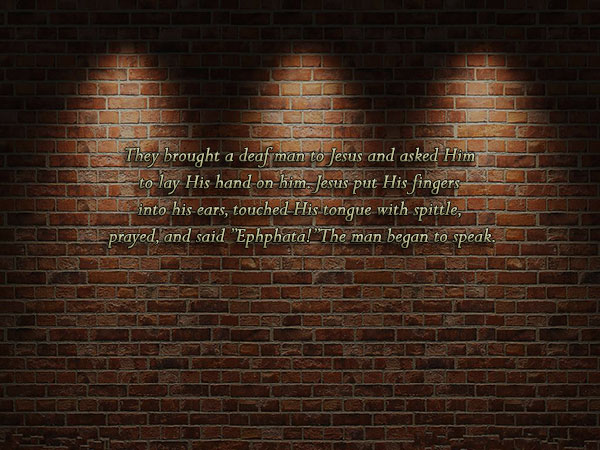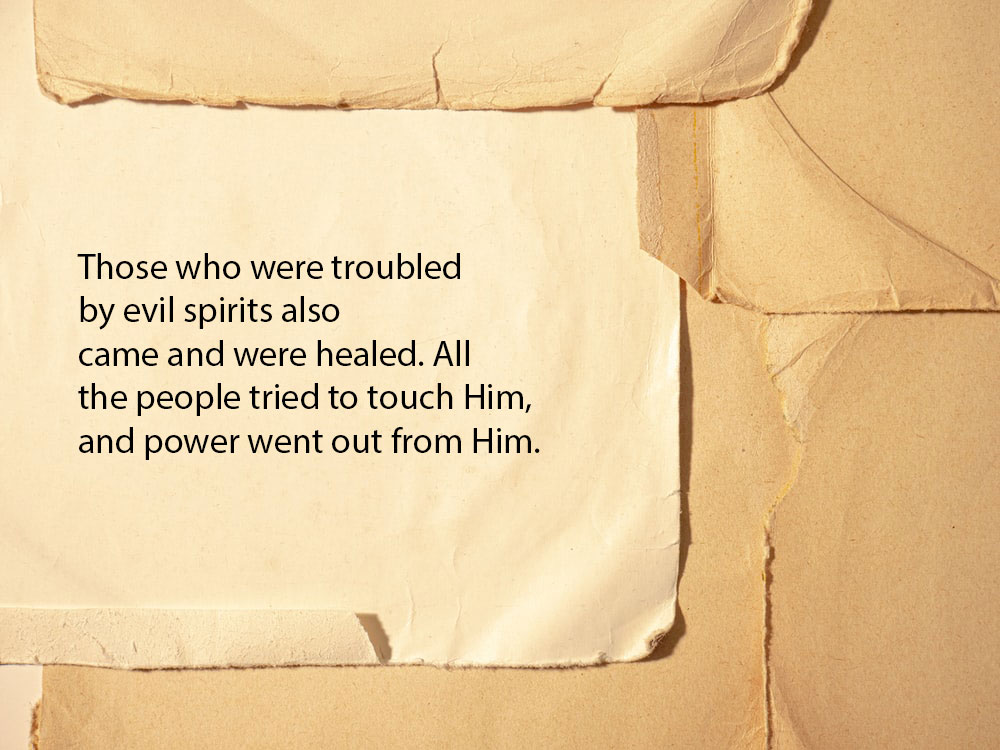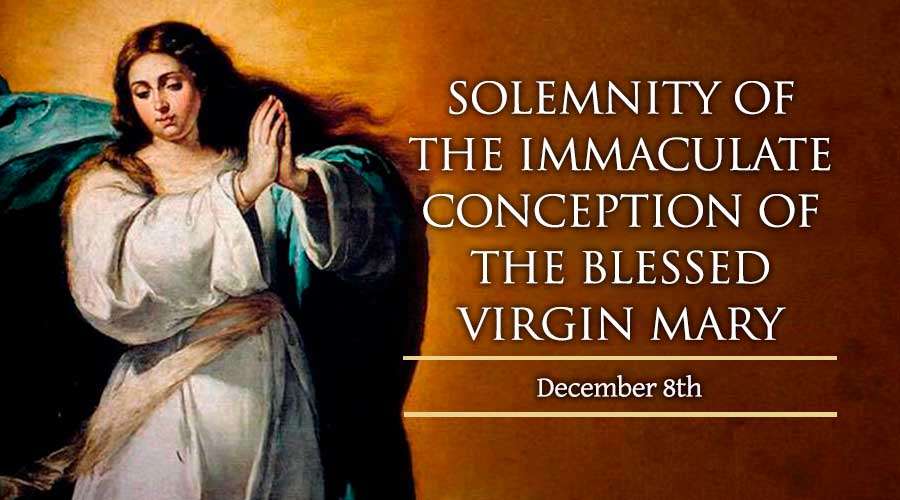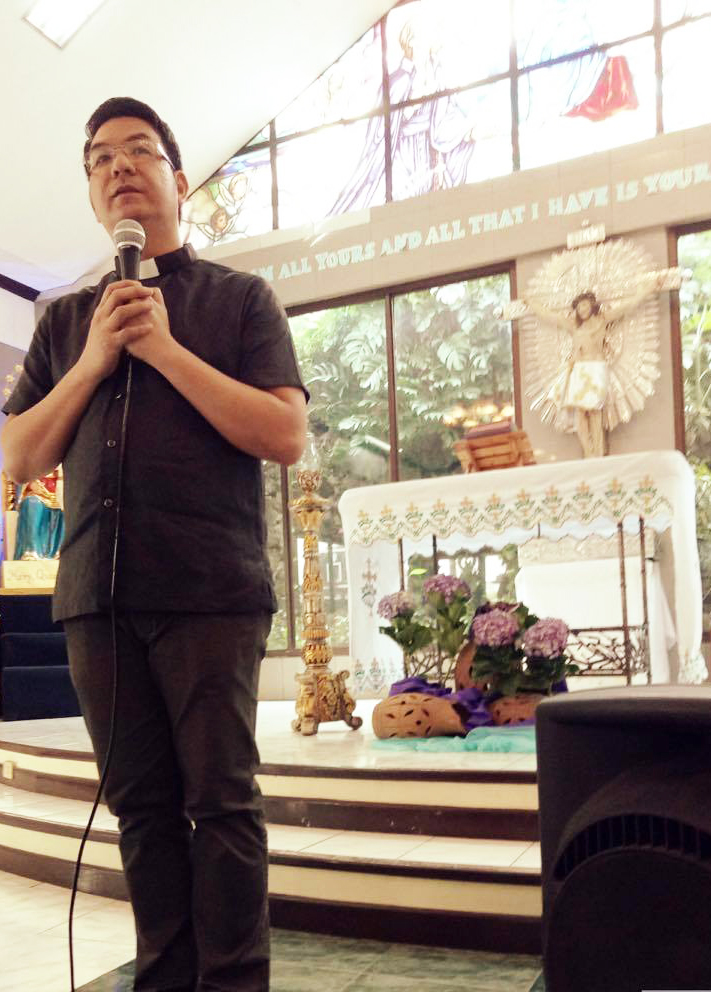 FR. FED YUMANG said that, even if it is not yet Advent, we can pray with Mary consciously already so that every word that we utter becomes a glimpse of spirituality.
FR. FED YUMANG said that, even if it is not yet Advent, we can pray with Mary consciously already so that every word that we utter becomes a glimpse of spirituality.
Thus, he welcomed those who heeded the call of the Montfort Center of Spirituality (MCS) to join the missionary priests and their associates to prepare for the Advent season and the second coming of Jesus. We do this, he intoned, by using symbols such as the advent wreath, a circular symbol of God’s love which, because eternal, does not have a beginning or end. The three purple and one pink candles remind us of the prophesies: from the virgin birth, to the hope for Israel amidst suffering, to the love of the Father and the Son and, ultimately, to Shepherd Sunday where joy is proclaimed because it is near, almost certain and, in fact, has arrived. Sorely, however, in our haste to meet our Savior, we waylay ourselves and, in the commotion of the preparations, we lose it altogether and disappear in the pomp, pageantry and profligacy of what was supposed to be a silent, simple and solemn homage to His humility. I’ve always maintained that edifying Easter holds a more meaningful import than consuming – or being consumed by – a consumerist Christmas.
To illustrate the fickleness of our faith, especially when faced with the allure of Christmas consumerism that dwarfs the abstract of Advent, Fr. Fed called our attention to the chairrangement about us. He explained that the monobloc seats were easier to handle than the chairs with kneelers, especially for the exercise that he has prepared for that morning. He asked everybody to stand, go around and introduce themselves to as many faces whose hands they will shake. It was the perfect opportunity for everybody to put a name on fellow familiar figures whom they may have bumped into already yet only greeted as perfunctorily with a smile or a wave. Precisely, I discerned his purpose as placing flesh onto the face. In the processing that followed, Sister Tita confidently dropped off names as she remembered them during the handshaking and brief exchange, which impressed Fr. Fed, the others, and me, particularly (I grinned recalling the memory aid that she associated me with).
Having achieved the end of the exercise, and certain that there will be ease in the next step, Fr. Fed proceeded to divide the plenary into small groups and have them share insights on what holiness is all about. The animated flurry of a while ago subsided into pockets of whispers as the groups seriously took their tasks to heart.
Sis Toti represented a group that listed several virtues as a summation of sainthood. Fr. Fed joked that it was a breathtakingly long list and a tall order for the faint of heart, eliciting snickers from the audience. Before I raised my hand, Ate Maricar expounded that holiness is when someone has no trace of sin and is humble doing service. Then I offered that there were four adults and a child in our group, the largest among paired-off bodies. Starting off with Sis Liit, I said that her idea of holiness meant purity of body, heart and mind; Ate Taki’s take was simply purity of the body, citing as an example that of Pope Francis’ which, as anyone will doubtlessly agree, embodied everything holy; my idea had to do with conscience which, when it bothered, meant that the holy existed; Sis Irene encompassed all our examples by positing everything in man has to be in the image of God in order for him to be like Him. I summarized our sharings by concluding that the sixth-grader Jahd in our midst floored us with her 12-year-old wisdom: Mary is the epitome of holy. So much so, she expressed, that even non-Catholics are awed by her and, for lack of information about her, resort to casting aspersions at her instead because they do not know what and who she is: purity personified. She was truly set aside by God because of her fullness of grace. And we felt so blessed with the little miss in our midst.
Then Fr. Fed called on the brothers in the back. (Earlier, he made special mention of three Madriñan ladies (he honored them aptly) in blue who were in a row across from the young men.) They took turns in sharing with us their years of study in the seminary and it was truly enlightening and essential what they had to say. On top of what their blended harmonies have been regaling us with Mass after Mass after Mass. One seminarian shared that holy is goodness related to God for God. Another proposed that it is connectedness to God. A third said that holiness is to do something with good intentions and offer it to God.. Small wonder their all-male chorale exudes what their minds muster.
The snacks served not only to stave off lunch, which was still way off after the Mass succeeding the seminar, but also to prepare the participants for Fr. Fed’s surprise – an energizer! As if the coffee and cakes were not enough. And so, he demonstrated the action song Vale, Vale, Vale, which turned out to be a simple yet fun calisthenics. Sis Fe would holler jokingly later if she could make vale from Fr. Fed; I chimed in with pang-zumba, in keeping with the lyrics of the dynamic. Several shared the mirth of our banter.
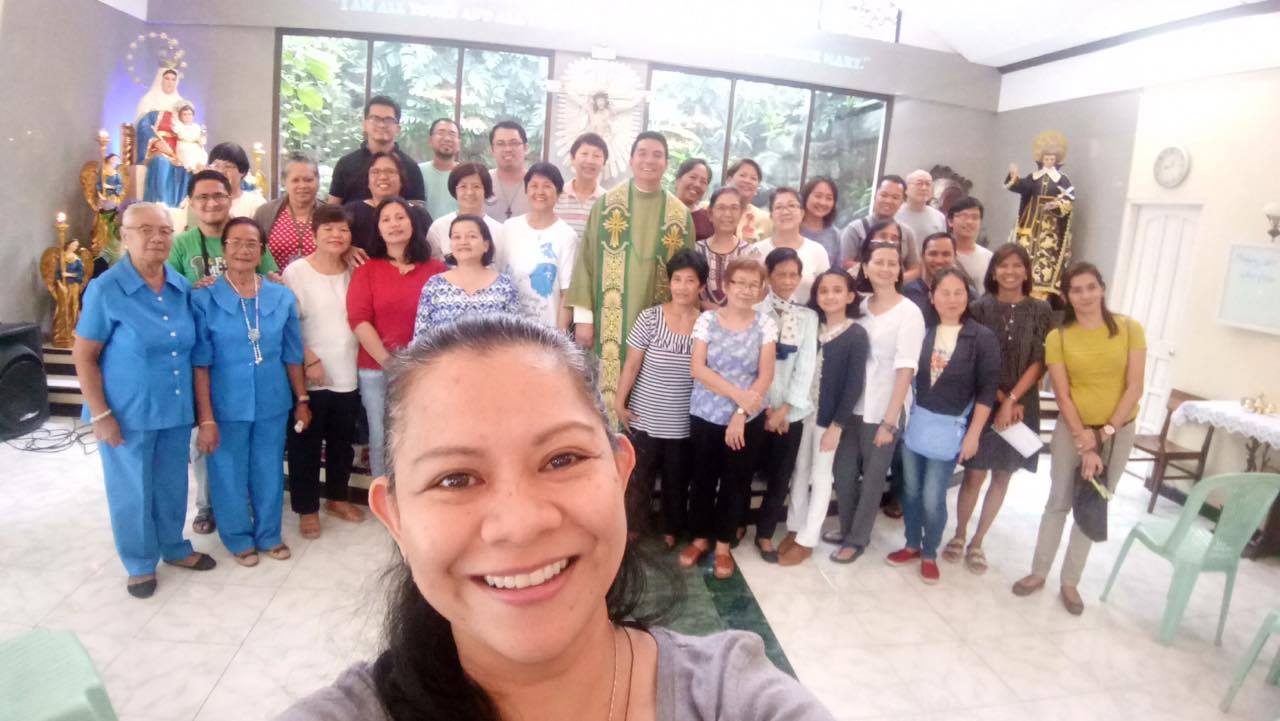
Having settled the smiling audience down, Fr. Fed proceeded to postulate that we see many things that we can identify with holiness but because of their being too familiar, we take them for granted. His example, essential air, was on point. Evidently to deepen the understanding of the subject, Fr. Fed consulted his power point to the word’s meanings in Latin, which was sanctus, or unchangeable in more legal ways than one, as in utos ng hari in Pilipino, which needed no further description; Greek, hagios, which puts more emphasis on sin, so we are set apart to be free from it; Hebrew, qodesh, which meant the action and nature of God; and the old English halig, that redirects to the more contemporary hallow, the equivalent of holy. Having huffed a plethora of word particulars, he went on to insist that God wanted us to be His instruments in holiness. It is, after all, the heart of Pope Paul VI’s encyclical Lumen Gentium, a universal call to holiness, not only priests, bishops and the Pope himself, but for lay people preferably, to worship, and participate with, God.. I could not help but notice (and many in the audience agreed with me afterwards) that Fr. Fed was “excruciatingly” enunciating his every word, although he visibly decided not to repeat himself, so that his listeners may not miss any. And, he stressed, we cannot effectively emulate Jesus as model because He is fully divine as He is human, but we will find it worth our while to imitate Mary, for her awesome simplicity. I could feel Fr. Fed’s energetic enthusiasm as he proceeded to point towards the events that pronounced her perfection, each attribute of the virgin supported by scripture. Mary was committed to faith (Luke 145); had a zealous charity (Luke 139); deep humility (Luke 148); profound wisdom (Luke 2:19; great fortitude, (Luke 2); inner strength (Matthew 2); prompt obedience (Luke 1); purity (Luke 1); and unwavering hope (John 2). Mary was without self but full of God, grace Himself. How hard is it to imagine her just-concluded maternity in flight because her newborn child was in danger? The bottomline, Fr. Fed said, is her total slavery to God. Which he enjoined us to think about. Which Montfort had and professed, because of his burning love for Mary, and so made possible his consecration to Him in the hands of His mother. Would that those who have been sanctified by the experience continue to be consecrated, as often and as necessary.
How do we match Mary’s virtues? It’s not easy, he seemed to stress, but it is a doable deed. And Advent is the opportune time to affirm the attitudes in us if we intend to integrate ourselves into the season’s significance as a preparation not for self-aggrandizement but for the reason why we are reflecting the preparation at all, not only for Christmas but, daily, like Mary’s fiat, which was complete and total, like her life depended on it, because she carried the weight of the saver of sins, which was a totus tuus of sorts at the outset. The man of the cloth made his message loud and clear and hit home. Never was he as impassioned as when his earnest and heartfelt rhetoric warmed the air-conditioned chapel, embracing the place and its people with renewed fervor, like he was Montfort himself mouthing off the virgin mother’s celestial qualities. Once more, Mary was accorded supreme honor. The accolade was a fitting accolade to bestow the advent of a glorious commemoration of her participation in the world’s salvation. Christmas is not supposed to amass goodwill and joy and peace without announcing the coming of Christ, through Mary’s magnificent silence, simplicity and sinlessness. Only than shall mankind have earned its merit of merriment, in a happy, holy and humble homage to its source.
ABRAHAM DE LA TORRE




